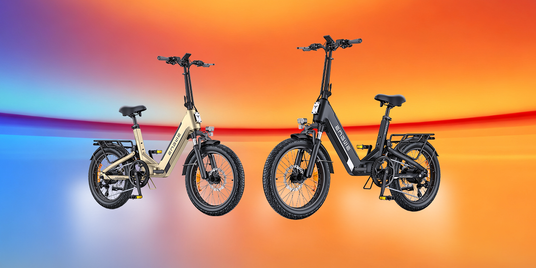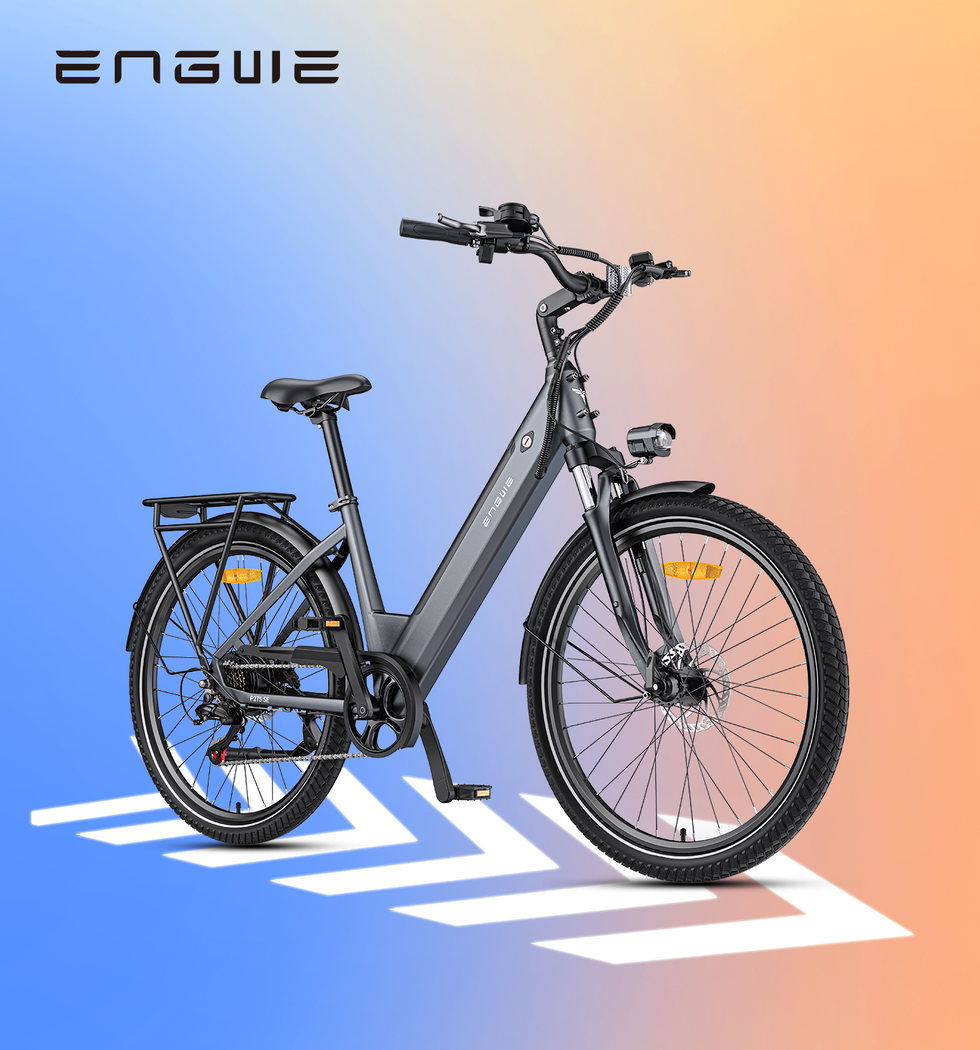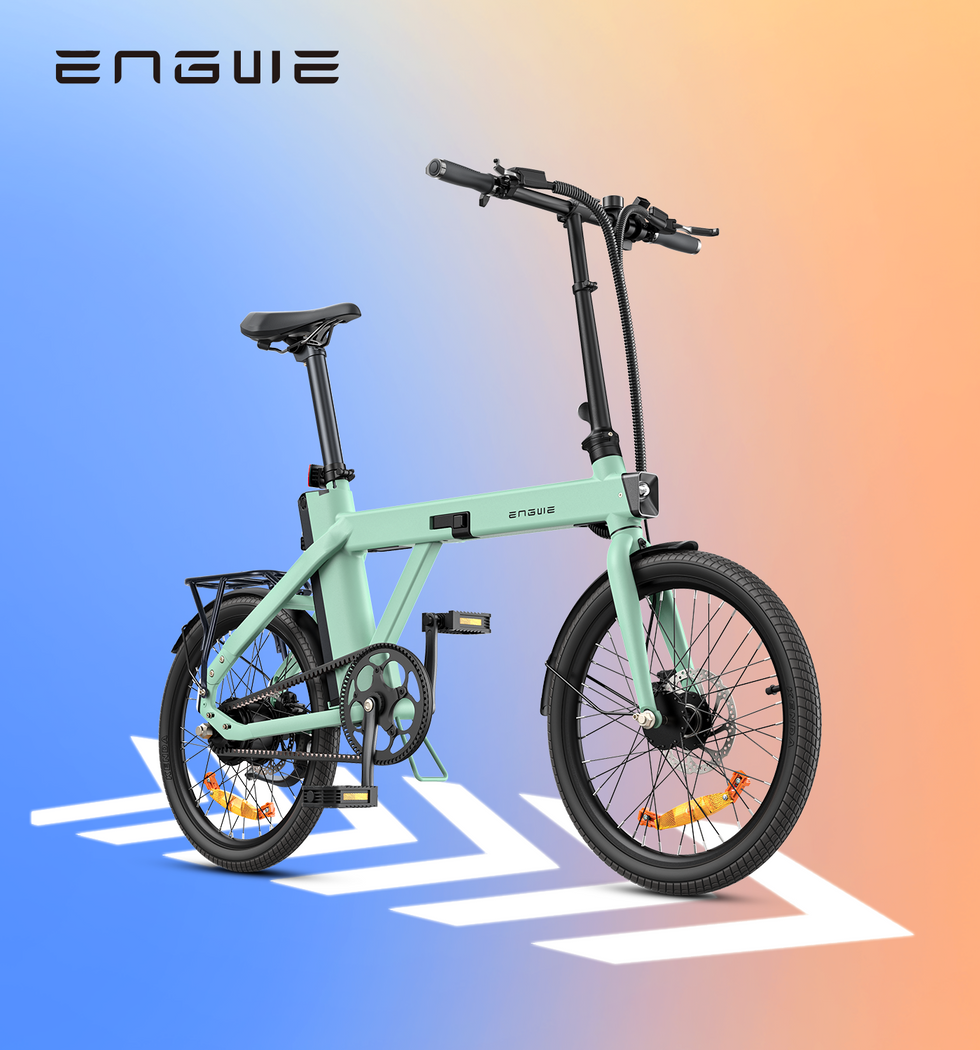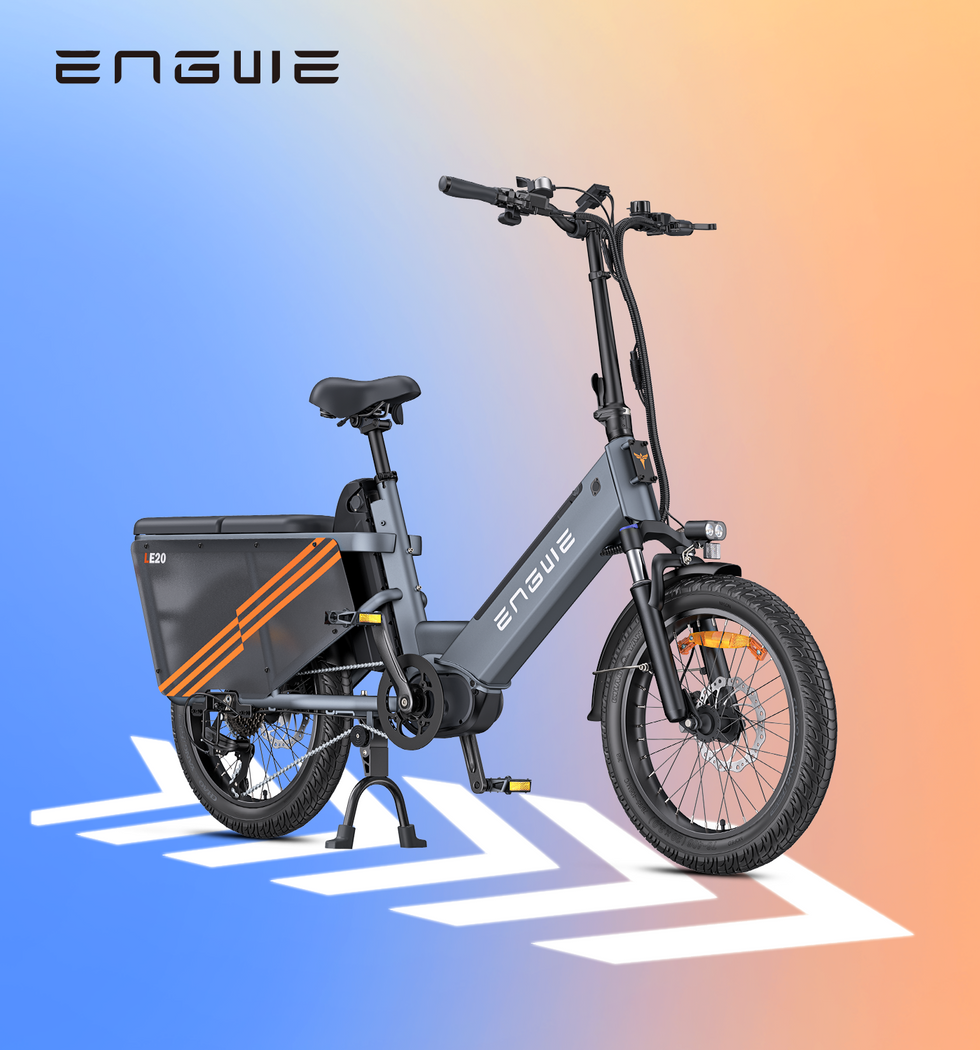You must understand cycle tyre sizes before you buy a new one. When you shop for tyres markings like 700×25C, 29×2.25, or 26×1½ often confuse you. These markings look similar but they actually represent very different sizes. That's why many riders struggle to figure out the right size.
Tyre makers use several sizing systems: imperial, metric, American, and ISO standard. Because each brand follows a different system you need to know how these systems work to choose tyres that fit your rims and match your riding style.
This guide takes you through the maze of tyre sizes and explains each marking. By the end you will confidently pick the right size for your ride.
What Do Different Cycle Tyre Markings Mean?
The numbers and markings on the sidewall of the tyre show its size. Most cyclists do not know this. First understand the sizing systems to decode them:
ISO / ETRTO
The ISO (also called ETRTO) standard is the most reliable system today. It is represented by two numbers. Both numbers are separated by a dash for example 25-622.
-
The first number indicates the width of the tyre which is measured in millimetres (25mm).
-
The second number is the bead seat diameter (622mm). It is the point where your tyre fits on the rim.

The number of the bead diameter determines if it matches your rim. No matter what the other markings say. When two tyres share the same second number they fit the same rim.
2. Imperial and Fractional
Most older bikes still use imperial or fractional sizing which is represented as 26×1½. These measurements appear in inches. But 26×1½ does not equal 26×1.5. Fractional and decimal markings look almost similar. But represent completely different diameters.

3. Metric
The metric system markings are mostly found on road bike tyres. You will see labels like 700×25C.
-
The “700” represents the outside diameter of the tyre. It is close to 700mm. However the modern 700C tyres are actually smaller.
-
The “25” is the approximate width of the tyre.
-
“C” indicates the inner diameter of the tyre.
4. American
Most mountain bikes use American which are indicated as 26”, 27.5”, or 29”. These markings are equal to ISO bead diameters: 559mm, 584mm, and 622mm. A 29” MTB tyre and a 700C road tyre have the same bead diameter (622mm).
Tyre Size Conversion Table
Tyre sizes confuse because manufacturers describe the same rim in different ways. They can use metric (ISO/ETRTO), imperial, or traditional names. The ISO bead seat diameter (in millimeters) gives the only number that truly matters. If that number matches the tyre fits your rim.
We have created a simplified bicycle tyre size conversion chart. It shows the most common sizes you will encounter:
|
ISO / ETRTO |
Metric |
American |
Imperial |
Typical Use |
|
622 mm |
700x23C-700x47C |
29x2.1, 28x1⅝x1⅛ |
29” |
Modern road, gravel and 29” MTB tyres |
|
630 mm |
Not common |
27x1-27x1¼ |
27” |
Vintage road bikes (not 700C) |
|
584 mm |
650x47B-650x57B |
27.5x2.2 |
27.5” |
Modern MTB, gravel |
|
559 mm |
Not common |
26x1.0-26x2.25 |
26” |
Classic MTB, touring bikes |
|
590 mm |
650x35A-650x40A |
26x1⅜ |
26x1⅜ |
Older city/utility bikes |
|
571 mm |
650x23C-650x40C |
650x1-650x1⅜ |
650C |
Smaller road/triathlon bikes |
|
507 mm |
Not common |
24x1.5-24x2.0 |
24” |
Kids’ bikes, BMX |
|
406 mm |
Not common |
20x1.1-20x2.0 |
20” |
Folding bikes, BMX |
|
305 mm |
Not common |
16x1.5-16x2.0 |
16” |
Folding/kids’ bikes |
|
203 mm |
Not common |
12x1.75 |
12” |
Balance bikes, toddlers’ bikes |
When you select a tyre focus on diameter and width. The width directly impacts the ride feel. Narrow tyres roll faster on smooth roads but feel firmer. Wider tyres absorb bumps and offer more grip but they increase rolling resistance and require extra frame clearance.
The overall wheel size is calculated by adding the bead diameter to twice the tyre’s width. This measurement affects frame fit, brake reach, and even gear readings on cycle computers. That’s why two tyres that look identical on a shelf can change your bike’s fit and ride when mounted.
Tyre and Rim Compatibility
One of the biggest mistakes riders make is trying to squeeze a tyre onto a rim it was not designed for. The golden rule is simple: the bead diameter must be identical between the tyre and the rim. A 622 tyre only fits a 622 rim.
Width is more flexible but even here there are limits. A general rule is that the tyre width should be between 1.4 and 2.2 times the internal rim width. Too narrow makes the ride harsh and unstable. Too wide and a tyre can bulge awkwardly. It affects handling and stresses the sidewalls.
Modern rims with hooked edges give more flexibility. They can safely hold wider tyres than older straight side rims. That is one reason you will now see road bikes running 28mm or 32mm tyres comfortably on rims that once were used only with 23mm.

Types of Bicycle Tyres and Their Sizes
Cycle tyres are categorized by where they fit such as road, mountain, and gravel. Most bikes today use clincher tyres with inner tubes.
Tubeless tyres have become popular for mountain and gravel biking. They do not have an inner tube. Instead they seal directly to the rim. Fit on specific tubeless ready rims or conversion kits. Their sizes still follow the standard bead diameters like 559 (26”), 584 (27.5”), and 622 (700C/29”).
The tubular tyres are found mostly in racing. These are glued directly onto special rims. They are not interchangeable with clinchers. You can see labels like 700C on them. Tubular tyres cannot be fitted to a normal 700C clincher rim.
Road, Gravel, MTB and Kids’ Tyre Sizes
You cannot fit the same tyre on every type of bike. Different bikes suit different tyres. Road bikes almost always use 700C tyres (ISO 622). Traditional racing bikes used very narrow 23mm tyres. But now trends have shifted toward wider 28mm or even 32mm to add comfort and efficiency.
On gravel bikes you can choose between 700C and 650B. A 700C wheel rolls faster on smoother terrain and a 650B rim lets you fit much wider tyres. It improves grip and comfort on rougher trails.
Mountain bikes use three main wheel sizes 26” (559mm) is older. The most popular is 27.5” (584mm) and the dominant is 29” (622mm). Each size has its own benefits:
-
26” feels nimble
-
27.5” balances speed and control
-
29” rolls faster over rough ground
Despite the different sizes the only bead diameter makes sure the tyre fits the rim correctly.
Children’s bikes use simple inch based labels such as 12”, 16”, 20”, 24”. These sizes are straightforward. But for unusual kids’ bikes, checking the ISO number is still the safest option.
Special Cases and Common Confusions
Some tyre sizes cause endless confusion. A good example is the so called 27-inch tyre. It is larger than 700C at 630mm bead diameter. It is not interchangeable.
Another is the 650 family. You will see 650A, 650B, and 650C all in different sizes. Of these 650B (584mm) is the most common today. Mostly found on gravel and mountain bikes.
Some Japanese and American branded tyres measure smaller than their stated size. That is why ISO is always safer than trusting old markings.
Recommended Tyre Pressures
Tyre pressure directly affects safety and ride quality. For narrow 23mm road tyres you can set the pressure between 90–120 PSI. A 28mm tyre rides best at 70–90 PSI. Gravel tyres around 40mm usually stay between 40–60 PSI. Mountain bike tyres wider than two inches run as low as 25–35 PSI.
In short, wider tyres run safely at lower pressure. The right pressure increases grip and comfort. When the tyre is marked with an absolute pressure you must not exceed it. When it shows a recommended pressure you can increase it slightly if you are a heavy rider.

How to Choose the Right Tyre Size for Your Bike
If you are replacing tyres start with the bead diameter. You can check the bead seat diameter on the sidewalls of the old tyre. If your rim is 622 then you need a tyre with 622 in the ISO number. Now check how much width your frame and brakes can accommodate. A road frame only allows 28mm and a gravel frame could swallow a 45mm.
Think about your riding style too. Racers chasing speed can stick with 25mm tyres. Commuters who want comfort will benefit from 32mm. Gravel riders split the difference depending on whether they ride more tarmac or trails.
Once you have matched bead diameter, checked frame clearance, and chosen a width that suits your riding and you are set.
Best Tyre Sizes for Your Bike
The tyre size depends on how and where you ride. Engwe's best e-bikes make this simple because each model comes with tyres designed for specific conditions.
City & Road Riding - Narrow Tyres (26-27.5”)
If you mainly ride on smooth roads narrower tyres roll faster and feel efficient. Engwe focuses more on versatile and fat tyres. However, Engwe P20 comes with slimmer 20” tyres that balance comfort and speed. Perfect for city commuting.
Mountain & Trail Riding - Medium Tyres (27.5”–29”)
Mountain bikes usually use wider tyres to improve grip and control on rough ground. Engwe’s Engine X with 27.5” tyres handles climbs, gravel, and trails.
All-Terrain & Adventure - Fat Tyres (20×4”)
For maximum comfort and stability fat tyres are suitable. Engwe’s popular models such as the Engine Pro and EP-2 Boost use 20×4” tyres. These tyres absorb bumps, give excellent traction on sand, snow, and dirt. It makes the ride smoother on city roads too.
Folding & Compact Riding - 20” Tyres
For portability and urban convenience, folding e-bikes like the Engwe EP-2 Boost and Engine-X use 20” tyres. They are wide for stability and also small to keep the bike compact when folded.
By matching tyre size to your riding style, you improve comfort and extend the life of your e bike. Engwe makes it easy by offering models with carefully chosen tyre dimensions for every type of rider.
YouTube Video Link:
Conclusion
Cycle tyre sizes can look like a jumble of numbers and letters. But once you focus on the ISO bead diameter, the puzzle starts to make sense. As for now, you have learnt how to read the markings. Get the bead diameter right, choose a width that suits your style and frame to enjoy a smoother, safer, and more enjoyable ride.
FAQs
Can I fit wider tyres on my bike?
Yes, but only if your frame, fork and brakes have enough clearance, and your rim can safely support the extra width.
What’s the difference between 700C and 29”?
Nothing. They both share the 622mm bead diameter. The difference is mainly in how the road and mountain bike industries label them.
Why does not my tyre size match my wheel size?
Because older naming systems mostly referred to the overall outside diameter. It is not a reliable measurement. ISO numbers are more accurate.
Can I mix different tyre sizes front and rear?
Yes, some riders do, for example a wider front tyre for grip and a narrower rear for speed. Just make sure both fit your rims and frame.
How do I know if my rim supports tubeless tyres?
Look for “tubeless-ready” printed on the rim or check the manufacturer’s specs. Standard rims would not hold tubeless tyres safely without a conversion kit.



